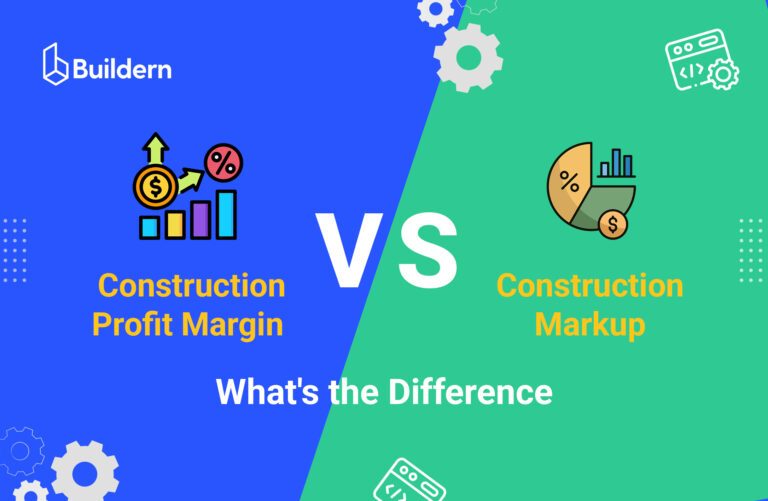How to Hire Construction Workers: A Guide for General Contractors

One bad subcontractor can derail your entire build. This is a reality for any general contractor, whether it’s a small custom home builder or a commercial construction business.
Making a wrong decision during hiring poses great risks as it may impact the budget and, more importantly, the firm’s client relationship and reputation. To avoid such concerns, it’s better to choose software tools to track performance and deadlines to keep teams aligned.
In this article, we will break down some key points on how to hire construction workers and build a team, either comprised of in-house workers or relying on subcontractors.
Table of Contents
- In-House Workers vs. Subcontractors
- How to Vet Subcontractors Before You Hire
- Project Manager’s Role in Hiring Construction Workers
- Digital Subcontract Agreement
- How Technology Helps in Hiring Workers/Subs
- Wrapping up

In-House Workers vs. Subcontractors
Knowing how to hire construction workers is a strategic decision. A tricky part is that construction firms are not traditional businesses that have an HR department to lean on. Not all teams can afford a dedicated HR professional to solve their hiring problems. In a sense, a general contractor is also actively involved in the hiring process, in addition to bidding jobs and running crews.
That’s where strategic decisions come in. Should you build out your in-house crew or subcontract the work? The answer often depends on the type of task. Trades like framing or carpentry are typically handled in-house. They are consistent and always in demand. But for specialized work like plumbing, electrical, or landscaping, subcontractors are a better choice.
Pros and Cons
Understanding the pros and cons of each team helps GCs make smarter choices when learning how to hire construction workers.
In-House Workers
Pros:
- Control: More direct supervision over daily work, safety rules, and quality.
- Team Consistency: Workers are familiar with the way GC works, standards, processes, and expectations.
- Immediate Availability: No need to wait or bid out work when a new task arises.
Cons:
- Higher Overhead Costs: Payroll, benefits, and insurance.
- Recruiting: Finding and training skilled workers takes time and resources.
- Work gaps: The company pays even when there are no active projects.
Subcontractors
Pros:
- Specialized Expertise: Good for particular tasks with a focus on specific skills.
- Flexibility: Can be brought in for a different project phase and scope.
- Low overhead: No need to manage payroll, benefits, or long-term employment.
Cons:
- Quality concerns: Instable performance during different projects, especially with new subs.
- Coordination risks: Poor communication and possible conflicts can cause costly delays.
- Less Control: A building firm relies on the subs’ schedule and work standards.
Still, the decision isn’t just about labor. It’s about risk. Make the wrong hire, and it will not only delay a task but may impact the success of the entire project. That’s why having automated scheduling or having digital bid requests saves time and resources to monitor subcontractor performance.
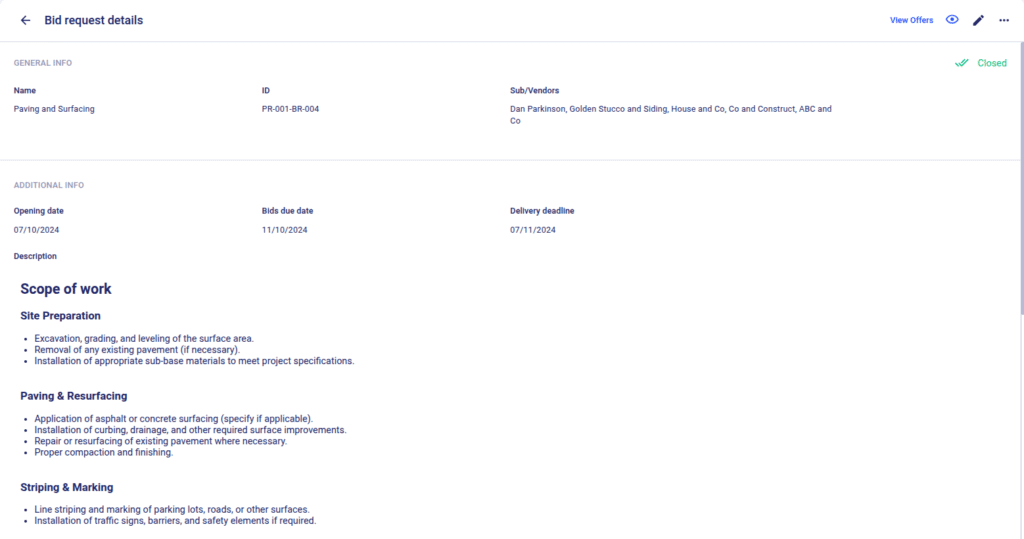
How to Vet Subcontractors Before You Hire
Hiring professionals for any business is not an easy task. That’s why choosing from thousands of specialty trade contractors working in the market is rather complicated. This requires a long vetting process to determine the most reliable ones.
Verify Credentials
Start vetting by checking for valid licenses and certifications. This depends on the state where the general contractor is operating.
For example, there are states requiring all plumbers to be licensed at the state level. In others, like Missouri, plumbing licenses are issued at the local level. There are legal formalities the hiring contractor needs to know, so as not to face penalties. Working without a license can even lead to the suspension of a contractor’s license in some states. So, the GC should make sure credentials match the scope of the work and local regulations.
Moreover, most specialty contractors need to have insurance to get a business license.
So, checking the insurance is also a part of a risk management plan. If there is no insurance, a builder will be in charge if problems occur at the site.
Review Past Projects
Before hiring a subcontractor, review completed projects, especially those closely matching your own in size and scope. A solid subcontractor can provide a portfolio of success stories.
It’s a big plus if the subcontractor has experience working with software tools. No need for training and no mess when working with files. By the way, it’s better to provide some easy-to-go solutions like QR codes for getting access to photos and other files.
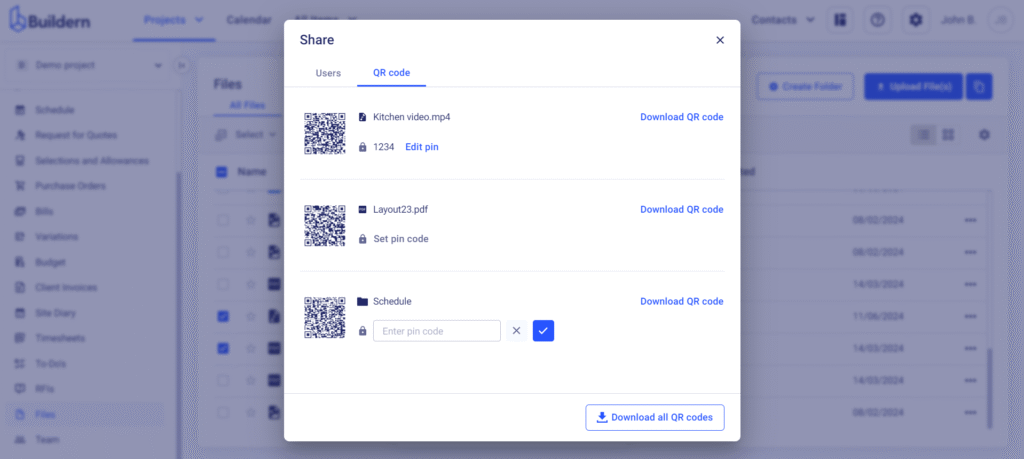
Ask About Safety Practices
When vetting subcontractors, don’t assume the subcontractor has the safety protocols in place.
A reliable subcontractor should have a clear safety policy and a culture that prioritizes worker protection. Strong safety practices are a direct reflection of a quality team.
- Have their crews completed site-specific safety training?
- Can they show proof of OSHA certification?
- What does their incident history look like?
These are the questions to ask. A crew that ignores safety is likely to ignore other critical points. The subcontractors worth hiring are the ones who treat safety as part of the job. It’s one of the clearest signs of a team you can trust.
Understand Crew Capabilities
Some subcontractors, like roofers, work in teams. If a project is big, the contractor should inquire whether the team is big enough to get it done on time.
If a crew is understaffed, the schedule will be affected. The same goes for equipment. If the task requires non-standard solutions, make sure they’ve got the right tools on hand before the work begins. Discovering missing tools or equipment halfway through the job can lead to delays and unexpected budget overruns.
Communication Channels Matter
It’s sometimes difficult to get along with colleagues. Construction is a field where all processes are interrelated. Now, imagine a project where over a dozen different crews are involved. In this case, having clear communication channels with subcontractors is essential.
Most builders know this by now: delays rarely come from big mistakes. Sometimes it’s a result of a small miscommunication. When any changes happen (because they always do), a contractor needs someone who can respond fast. That’s why built-in messaging tools and comments in the software tools can keep the project moving.
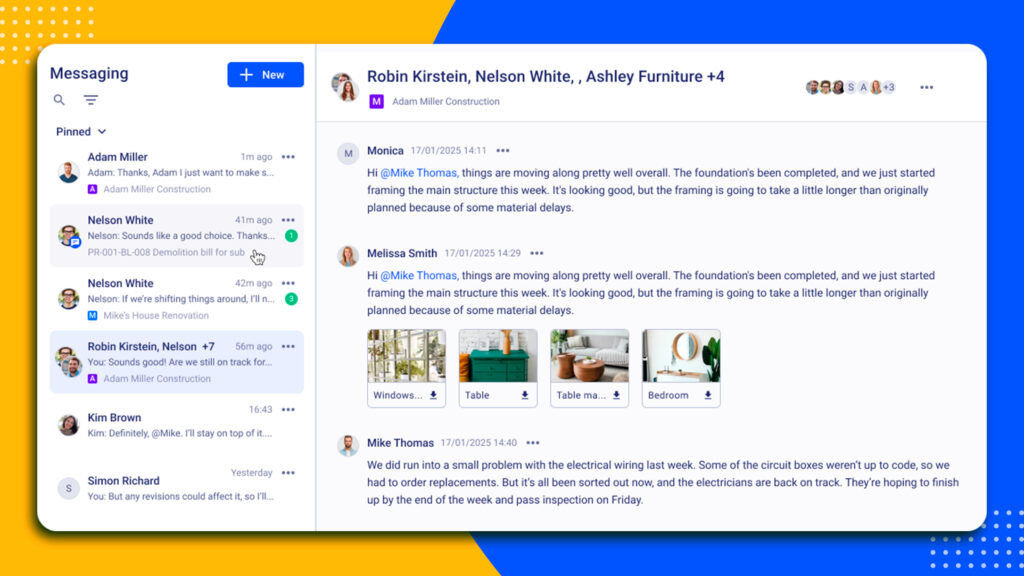
Project Manager’s Role in Hiring Construction Workers
The success or failure of a project is in the business owner’s hands. So, it’s crucial to determine whether an in-house worker or a subcontractor understands the processes and can implement them. However, there is a construction project manager who can make a difference and somehow take HR’s role.
Of course, it’s up to the GC to decide whether to hire a project manager. However, some processes can become much smoother if the builder considers filling in this position.
Sending Bid Requests
No one would argue that preparing an estimate is an easy task. In most cases, a project manager participates in managing the construction flow from scratch.
First things first, it is sending bid requests to include them in the estimate. The next comes bid leveling. It’s a phase that coincides with a screening interview for HRs. The project manager reviews and compares bids from different subs, while the most cost-effective bids make it to the final round.
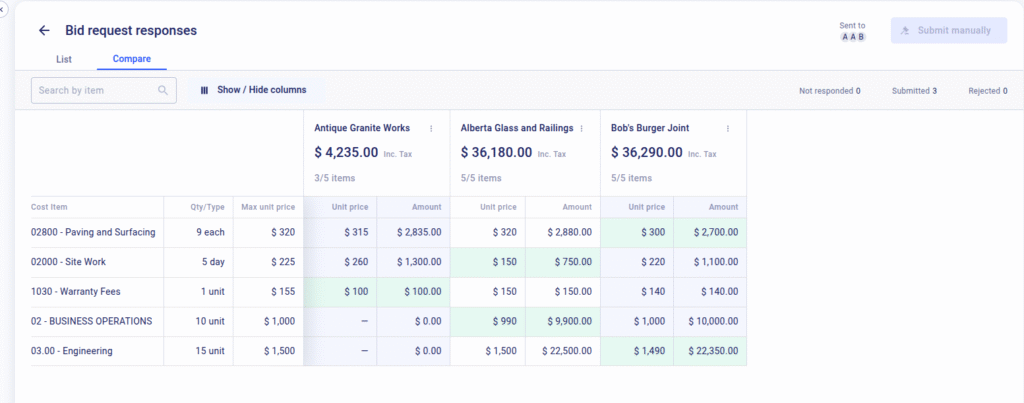
Onboarding New Workers and Subs
Most project managers don’t get the luxury of slow, steady timelines. Crews rotate fast, and trades overlap. Moreover, one team shows up before the last one’s even done packing up. Not to avoid a mess, a project manager has to tackle all onboarding issues on time. Besides, there can be several projects going on simultaneously, which require more attention to detail.
The PM ensures that every new hire or subcontractor understands how things operate.
Who reports to whom? How are schedule changes communicated? The PM also recommends how to stay in sync. This can be done, for example, through an in-app chat or email.
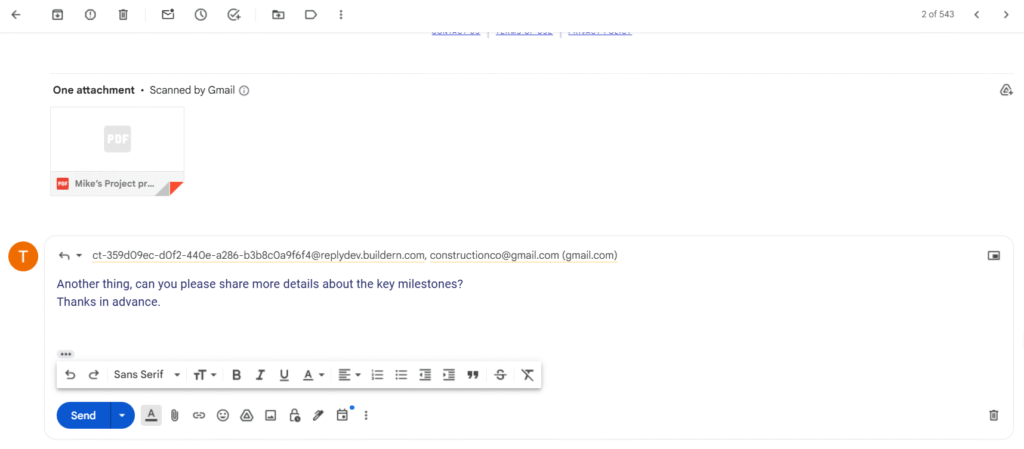
If a team uses construction management tools, a GC or an owner should explain how it works. The sooner a subcontractor is plugged into the system, the smoother the project is.
Making Quick Adjustments
Tracking progress and quality of work from day one isn’t only about project execution. It’s a critical part of how to hire construction workers effectively. Not every hire will be a good fit. The PM needs to identify early warning signs, like missed deadlines. Those are red flags that can’t wait. The only rule is to act quickly before it affects the project timeline and overall performance.
In this case, the project manager is better to source a replacement. When it comes to a sub, a new bid request should be created. This means there must be a shortlist of vetted subs or labor-ready contacts on hand.
In general, the tools helping in tracking and providing site updates keep everyone informed.
Managing Timesheets
One thing experienced project managers know: you can’t improve what you don’t track. That’s why keeping a close eye on labor is important.
If a crew shows up late, locks out early, or logs fewer hours than expected, that’s a red flag. Over time, this may affect progress, and sometimes it’s too late.
Smart builders don’t wait for issues to escalate. They use tools that track hours in real-time and assign tasks clearly, so there’s no confusion about who’s doing what and when. With Buildern, for example, project managers get automated timesheets tied directly to payroll and invoicing.
As a result, when all data is automated, a project manager can generate labor reports. Those serve as a kind of internal HR database. The managers can compare the performance and efficiency of different subcontractor teams.

Digital Subcontractor Agreement
No matter how many times someone promises to do something on time, it’s better not to risk and have it in writing. A written contract protects a general contractor. It outlines the scope of work, a clear amount to be paid for services, and the cost of materials per unit.
By a contract, we do not mean a piece of paper or agreement delivered by email. Thanks to the software tools, the entire process from sending a bid to a signed agreement happens online.
First comes sending a request for a quote or a bid request. Then the firm receives several responses with the prices per unit and the total amount. Buildern, for example, allows GCs to compare multiple bids side by side. It’s like scanning through resumes.
The owner or PM can review the pricing before awarding the job, which makes the decision more transparent and strategic. Each bid request is stored securely and is linked to the project.
When sending the quote, a sub provides an electronic signature to make it official.
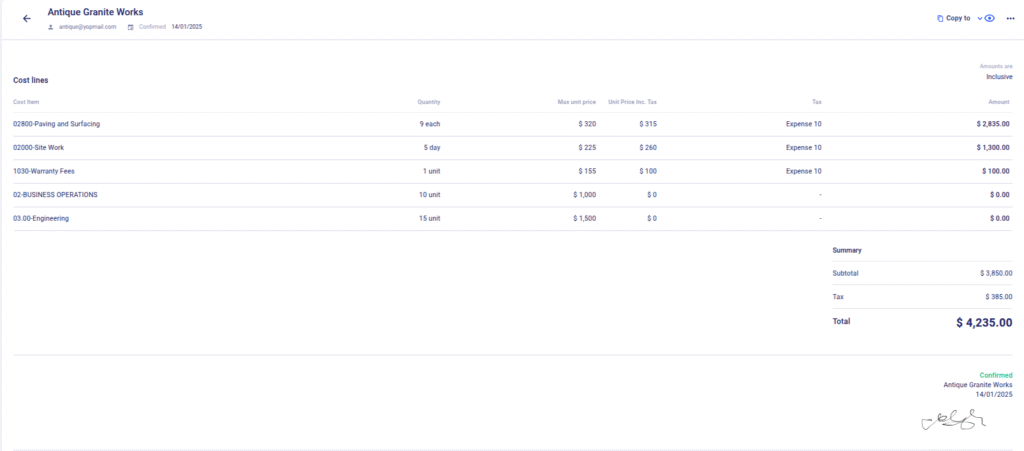
This becomes a legal contract that regulates the relationship between the builder and a subcontractor.
How Technology Helps in Hiring Workers/Subs
Hiring construction workers has been a manual, paperwork-heavy process. General contractors had to rely on phone calls, later on, emails, and spreadsheets. However, modern tools can minimize the risks and save money and time.
Manual vs. Software-Driven Hiring
| Hiring Steps | Manual Hiring | Soft-Diven Hiring |
| Bid Requests | Sent by email or messages, hard to track. | Sent via software platforms, easy and fast. |
| Bid Leveling | Manual comparison in spreadsheets. | A side-by-side comparison with different layouts. |
| Contract Signing | Printed or emailed, scanned, or stored manually. | Digitally signed and attached to each project. |
| Performance Tracking | Calls and emails result in delayed reports. | Real-time updates, schedules, and daily logs. |
| Communication | Emails and text messages via different social media channels. | In-app messaging and commenting function. |
| File Access | Sent as attachments. | Immediate access to photos and files via QR codes. |
| Timesheets | Tracking manually. | Automated reports and syncing with Xero & QuickBooks. |
Wrapping Up
One ruined project and maybe a ruined reputation. This is the cost of a bad hire in construction.
Whether it’s an in-house team or a subcontractor, the success depends on how a building firm can manage teams. Even with limited resources, a general contractor can simplify the process with construction management software tools. This is related to both the hiring process and managing the performance of workers.
For GC, having information stored on one platform and building a reliable database is investing in the future. The best time to fix your hiring process is before it breaks something bigger.
FAQ
Should a building firm hire in-house workers or subcontractors?
The hiring process depends on the business model and the usual project scope. In-house teams require more resources, but at the same time ensure control and consistency. Meanwhile, no payroll and benefits are needed when hiring a subcontractor. They provide flexibility and specialized skills with lower overhead.
Who is hiring construction workers?
It varies based on who’s managing the job site. A dedicated HR professional of a big construction company can be responsible for the hiring process. In the case of custom home builders, a general contractor oversees the hiring of the specialized subcontractors.
What is the best way to find a reliable subcontractor?
A consistent vetting process is a must when hiring a subcontractor. Check licenses, the ability to comply with the safety requirements, and insurance. Most importantly, go through a portfolio of past projects to hire a subcontractor having solid experience and a good reputation.


